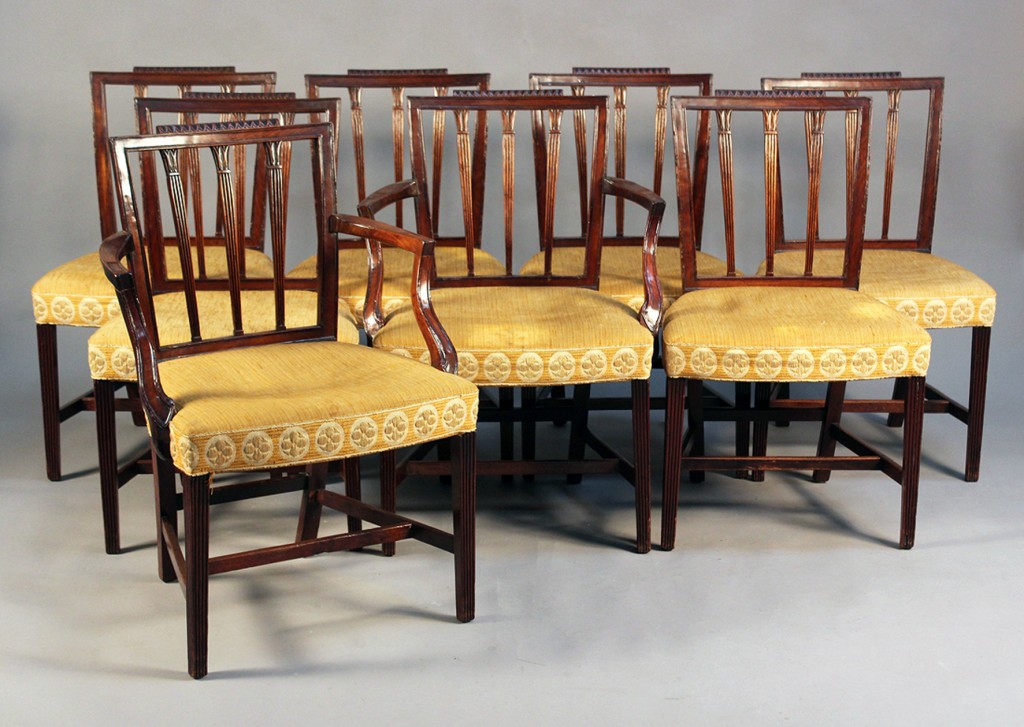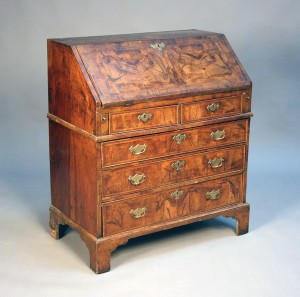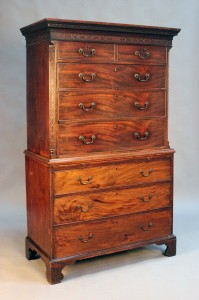
It is remarkable to reflect that between 1968 and 2001 prices for British antique furniture grew pound for pound faster than property in the South East of England during the same period.
In 2001 British antique furniture suffered a correction in prices which set a trend of falling values in this market over more than a decade. But in more recent times I have witnessed not only a firming of prices for antique furniture at Toovey’s but the beginnings of growth.

The Antique Collectors’ Club Antique Furniture Annual Price Index for 2014 has just been published. According to this index many sectors of the British antique furniture market have held their position, with what they describe as a ‘stable set of [results for] Walnut, Georgian Mahogany, Regency and even Victorian indices’.
The extraordinary percentage growth over two generations to 2001 was partly due to the exceptional value for money that antique furniture represented in 1968. These relatively low prices did not last for long. Growth was underpinned by strong demand from the United States and a passion for English country house taste amongst domestic UK buyers.
The correction in the market began with the tragedy of 9/11 and the terrorist attack on the Twin Towers in New York. After this Americans seemed to reassess their business overseas and their love affair with traditional British art and antiques, largely withdrawing from the market. The comfortable and timeless taste of the English country house fell victim to the success of companies like IKEA, whose famous marketing slogan ‘Chuck out that chintz today’ had begun in 1996. Furniture joined the ranks of the disposable commodity; something which still sits uncomfortably with my sense of the need for good stewardship of the world and its resources. Proper furniture became ‘brown’. The austerity of minimalism had arrived.
But fashion and international crises are not the only things which affect markets. Over my thirty years as an antique and fine art auctioneer I have observed that collectors’ markets are driven by our human associations with objects. I regularly hear people in the saleroom remark “Oh my Granny had one of those!” Often the things we most love will have come from, or have associations with, our grandparents or an older generation. After all grandparents are home grown heroes! Our tastes are frequently informed by these sentimental attachments. Objects and art provide the prompts to fond memories and stories, which make up the patch work quilt of our lives.

So what is underpinning a recovery of interest in British antique furniture? Overseas buyers have been returning via the internet. And there is growing interest from a large minority of UK buyers. It includes a younger television generation with eclectic tastes which include antiques. They, like me, find it hard to reconcile that a piece of flat-pack furniture can be thrown out and into the landfill to answer fashion. They understand the beauty and quality of an antique mahogany piece of furniture. They are generations whose grandparents have delighted in these pieces. In turn they are delighted that no new trees have been felled to answer their furnishing needs and they comprehend that these pieces will last beyond their grandchildren. These exciting individuals are passionate about history but delight in the new and are not afraid to mix antique and modern pieces. Like the post-war generation many of them are renting their homes. Unable to plan the ‘rosebuds’ over the door in the same way as the generations of home owners before them, they are turning to their interiors to give expression to their individuality and creativity. The uniqueness of antiques provides a vehicle for this expression. British antique furniture once again represents exceptional value for money.
Prices for good quality walnut, Georgian mahogany and Victorian furniture range from hundreds of pounds into the low thousands. Perhaps the market is set for the growth in prices witnessed from the late 1960s to 2001. It would be wonderful if antique furniture could once again prove to be a successful alternative investment. One thing is for sure, if you are investing in British antique furniture it will continue to delight you and successive generations of your family. It offers beauty, practicality and a pragmatic path to better stewardship of the world and its resources. Antique furniture is ‘green’ not ‘brown’.
By Revd. Rupert Toovey. Originally published on 18th March 2015 in the West Sussex Gazette.